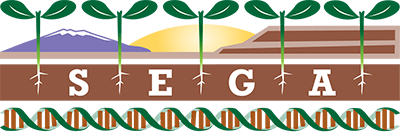You are here
Linking soil bacterial biodiversity and soil carbon stability.
Publication Type:
Journal ArticleSource:
The ISME journal, Volume 9, Issue 6, p.1477 - 80 (2015)ISBN:
1751-7362URL:
http://www.ncbi.nlm.nih.gov/sites/entrez?Db=pubmed&DbFrom=pubmed&Cmd=Link&LinkName=pubmed_pubmed&LinkReadableName=Related%20Articles&IdsFromResult=25350158&ordinalpos=3&itool=EntrezSystem2.PEntrez.Pubmed.Pubmed_ResultsPanel.Pubmed_RVDocSumhttp://www.ncbi.Keywords:
Bacteria, biodiversity, Biomass, Carbon, Ecosystem, Glucose, Isotopes, Oxygen, RNA, Ribosomal, 16S, Soil, Soil MicrobiologyAbstract:
<p>Native soil carbon (C) can be lost in response to fresh C inputs, a phenomenon observed for decades yet still not understood. Using dual-stable isotope probing, we show that changes in the diversity and composition of two functional bacterial groups occur with this 'priming' effect. A single-substrate pulse suppressed native soil C loss and reduced bacterial diversity, whereas repeated substrate pulses stimulated native soil C loss and increased diversity. Increased diversity after repeated C amendments contrasts with resource competition theory, and may be explained by increased predation as evidenced by a decrease in bacterial 16S rRNA gene copies. Our results suggest that biodiversity and composition of the soil microbial community change in concert with its functioning, with consequences for native soil C stability.</p>
- Log in to post comments
- Google Scholar
- RTF
- EndNote XML
- RIS
Theme by Danetsoft and Danang Probo Sayekti inspired by Maksimer
